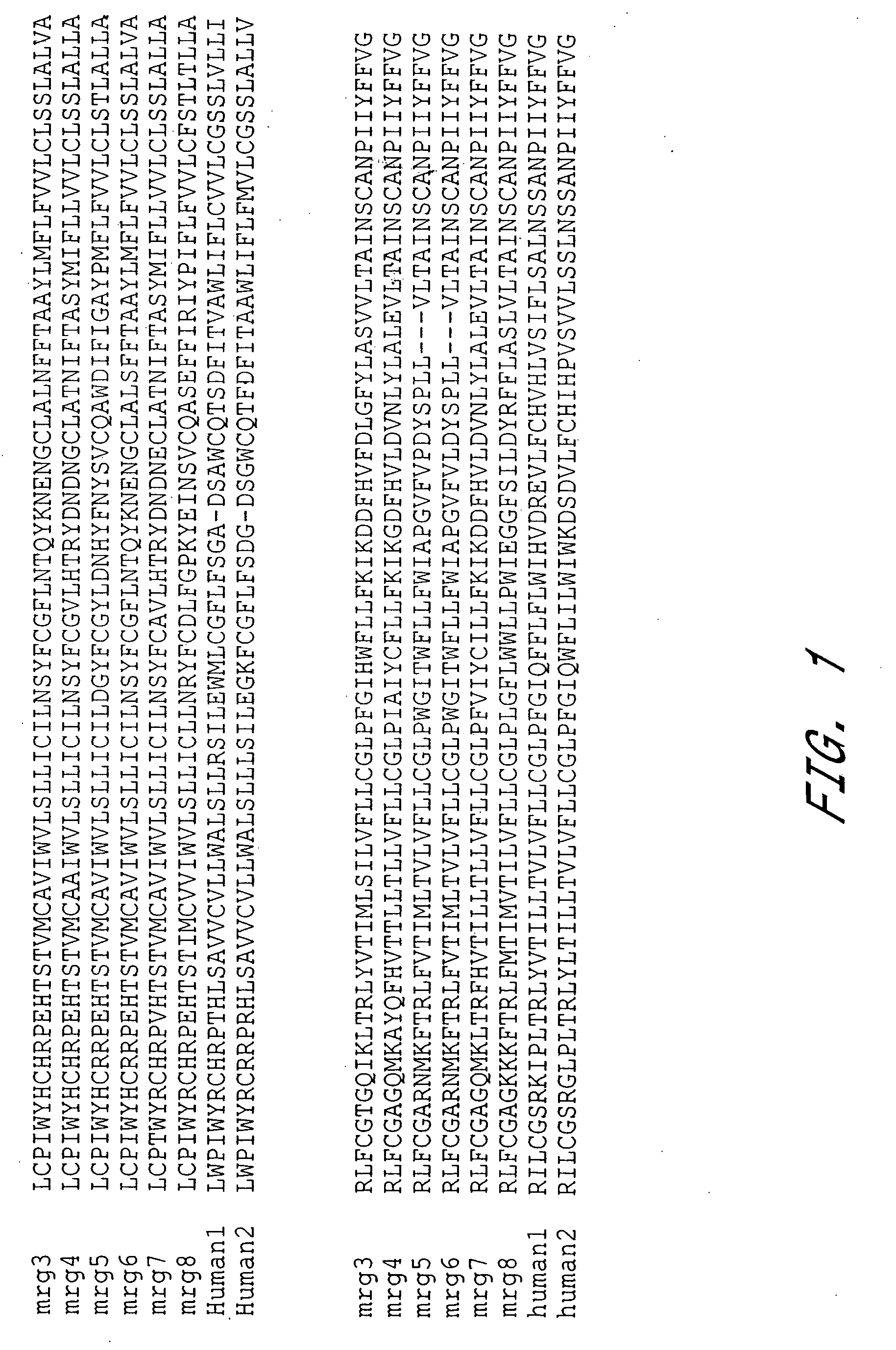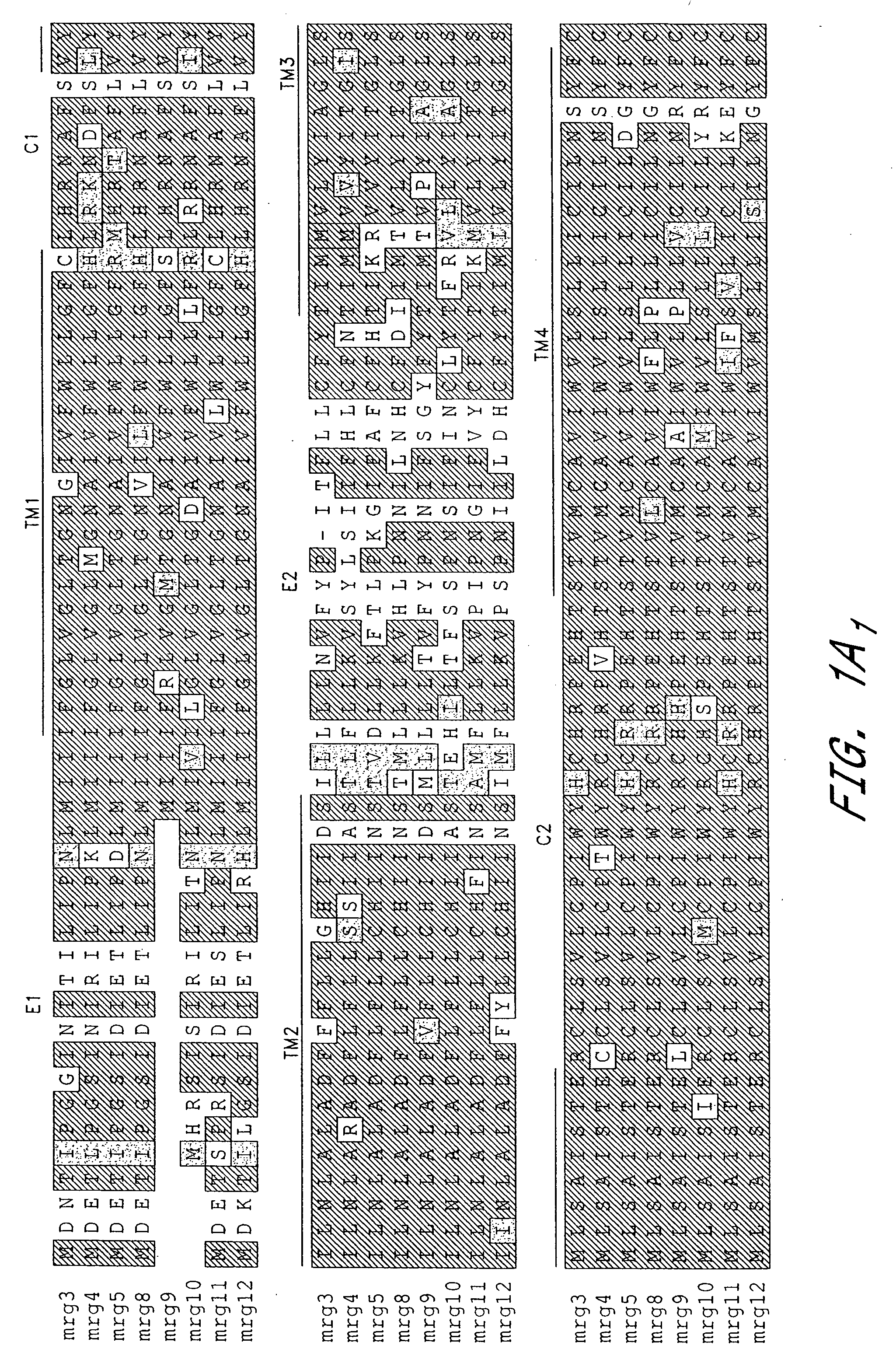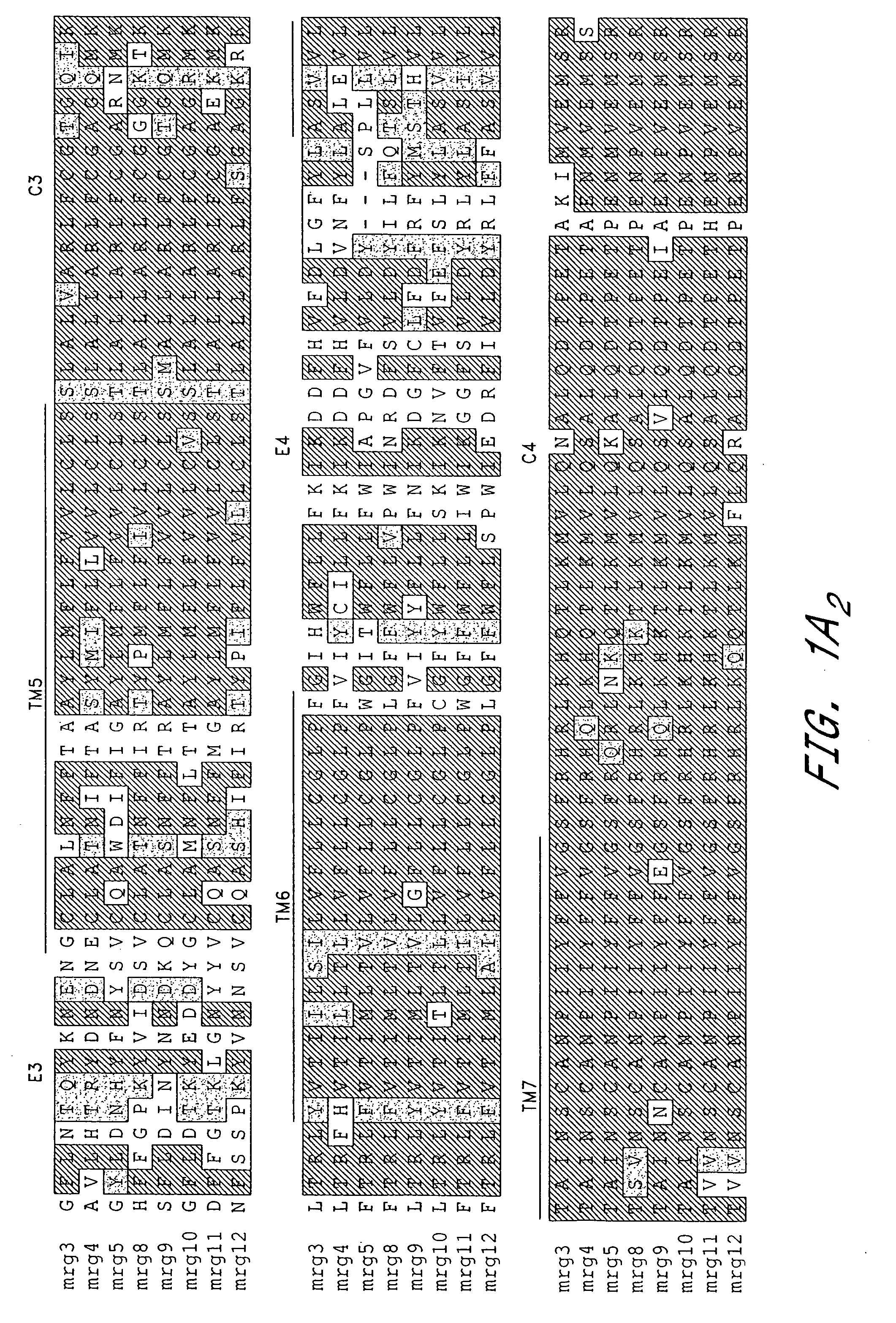Pain signaling molecules
a signaling molecule and pain technology, applied in the field of new gene expression, can solve the problems of inability to receive pain relief with currently available pain-relieving (nociceptive) drugs, inability to express the polypeptides of the invention, and inability to experience pain without obvious injury or protracted pain
- Summary
- Abstract
- Description
- Claims
- Application Information
AI Technical Summary
Benefits of technology
Problems solved by technology
Method used
Image
Examples
example 1
Positive Selection-based Differential Hybridization Between Wild Type and Ngn1− / − DRG to Identify Candidate Genes Involved in Nociception
[0330] Previous studies have shown that Neurogenin1 (Ngn1), a bHLH transcription factor (Ma et al. Cell 87: 43-52 (1996)), is required for cell fate determination of nociceptive sensory neurons in dorsal root ganglia (DRG) (Ma et al. Genes &Dev. 13: 1717-1728 (1999)). In Ngn1− / − mutant mouse embryos most if not all trkA+ neurons, which include the nociceptive subclass, fail to be generated. This mutant phenotype was exploited to isolate genes specifically expressed in such neurons, by subtracting cDNAs from neonatal wild-type and Ngn1− / − DRG. Genes expressed in the former but not the latter cDNA population are specific to trkA+ nociceptive neurons.
[0331] Total RNA was isolated from the dorsal root ganglia (DRG) of newborn wild type or Ngn1− / − mice (see Ma et al. Genes Develop. 13:1717-1728 (1999), Fode et al. Neuron 20:483-494 (1998) and Ma et al...
example 2
A novel Family of Putative G Protein-coupled Receptors Specifically Expressed in Nociceptive Sensory Neurons
[0333] Among the novel genes isolated from the screen were two independent clones encoding a receptor protein with 7 transmembrane segments (SEQ ID NO: 1), a characteristic of G protein-coupled receptors. The novel 7 transmembrane receptor isolated is most closely related to the oncogene mas, and therefore has been named mas-related gene-3 (mrg3). mrg3 is also known as mas-related gene A1, or MrgA1. A complete coding sequence for mrg3 has been deduced from the genomic DNA sequence (FIGS. 1A-C and SEQ ID NO: 2). MrgA1 shows significant homology (35% identity) to MAS1 (Young et al. Cell 45: 711-9 (1986)). It also shares significant homology (30-35% identity) with two other mammalian GPCRs, called Mas-related gene 1 (MRG1) (Monnot et al. Mol Endocrinol 5: 1477-87 (1991)) and rat thoracic aorta (RTA) (Ross et al. Proc Natl Acad Sci USA 87: 3052-6 (1990)).
[0334] Such G protein-co...
example 3
A Novel Two-transmembrane Segment Protein Specifically Expressed in Nociceptive Sensory Neurons
[0347] Another novel gene isolated in this screen, drg12 (SEQ ID NO: 13), encodes a protein with two putative transmembrane segments (SEQ ID NO: 14). In situ hybridization indicates that, like the mrg genes, this gene is also specifically expressed in a subset of DRG sensory neurons. Although there are no obvious homologies between this protein and other sequences in the database, it is noteworthy that two purinergic receptors specifically expressed in nociceptive sensory neurons (P2X2 and P2X3) have a similar bipartite transmembrane topology. Therefore it is likely that drg12 also encodes a receptor or ion channel involved in nociceptive sensory transduction or its modulation. The hydrophobicity of a homologous region of a drg12 human sequence (SEQ ID NO: 19) is compared with the hydrophobicity of mouse drg12 in FIG. 4.
PUM
| Property | Measurement | Unit |
|---|---|---|
| pH | aaaaa | aaaaa |
| pH | aaaaa | aaaaa |
| temperature | aaaaa | aaaaa |
Abstract
Description
Claims
Application Information
 Login to View More
Login to View More - R&D
- Intellectual Property
- Life Sciences
- Materials
- Tech Scout
- Unparalleled Data Quality
- Higher Quality Content
- 60% Fewer Hallucinations
Browse by: Latest US Patents, China's latest patents, Technical Efficacy Thesaurus, Application Domain, Technology Topic, Popular Technical Reports.
© 2025 PatSnap. All rights reserved.Legal|Privacy policy|Modern Slavery Act Transparency Statement|Sitemap|About US| Contact US: help@patsnap.com



